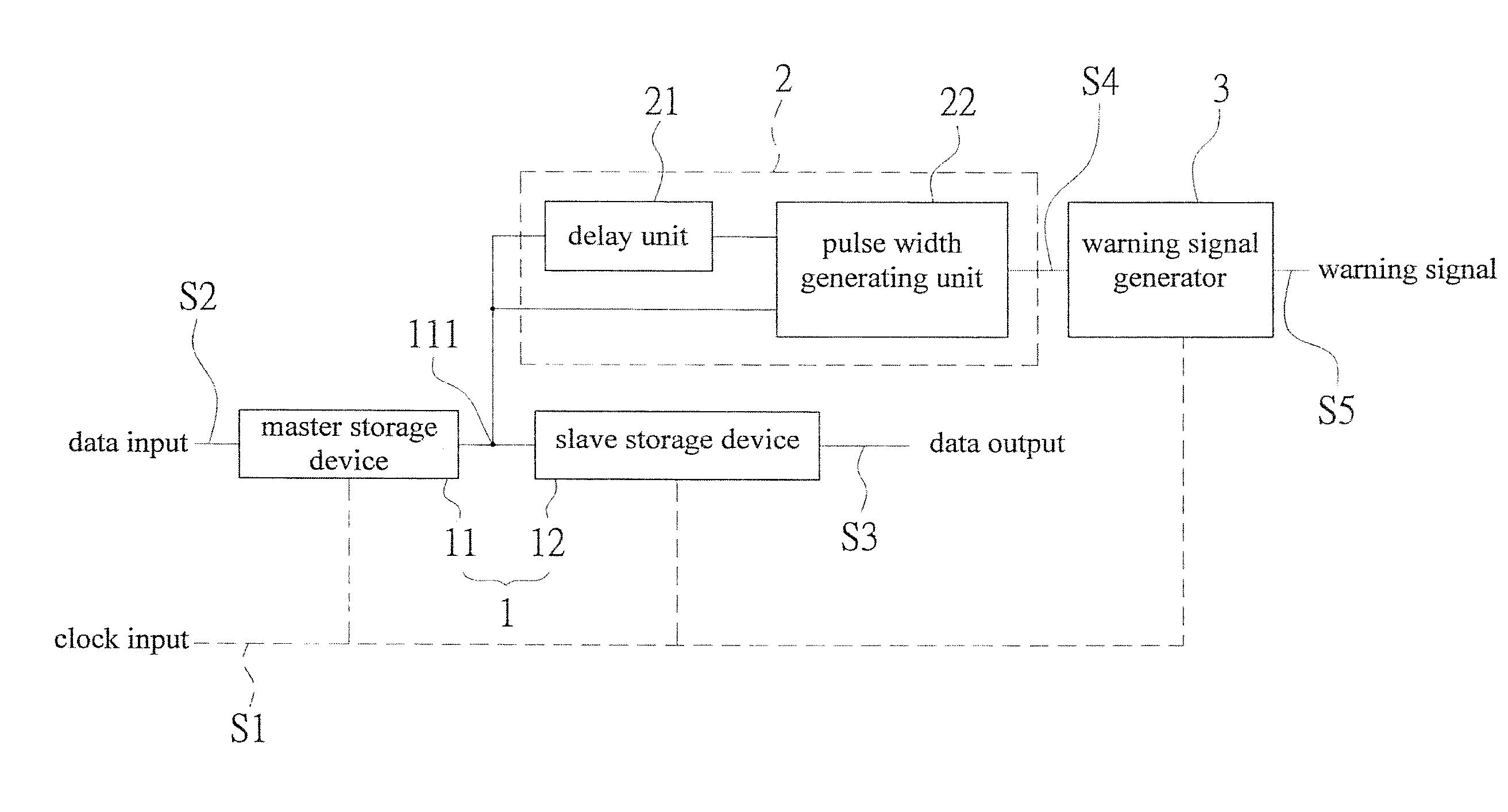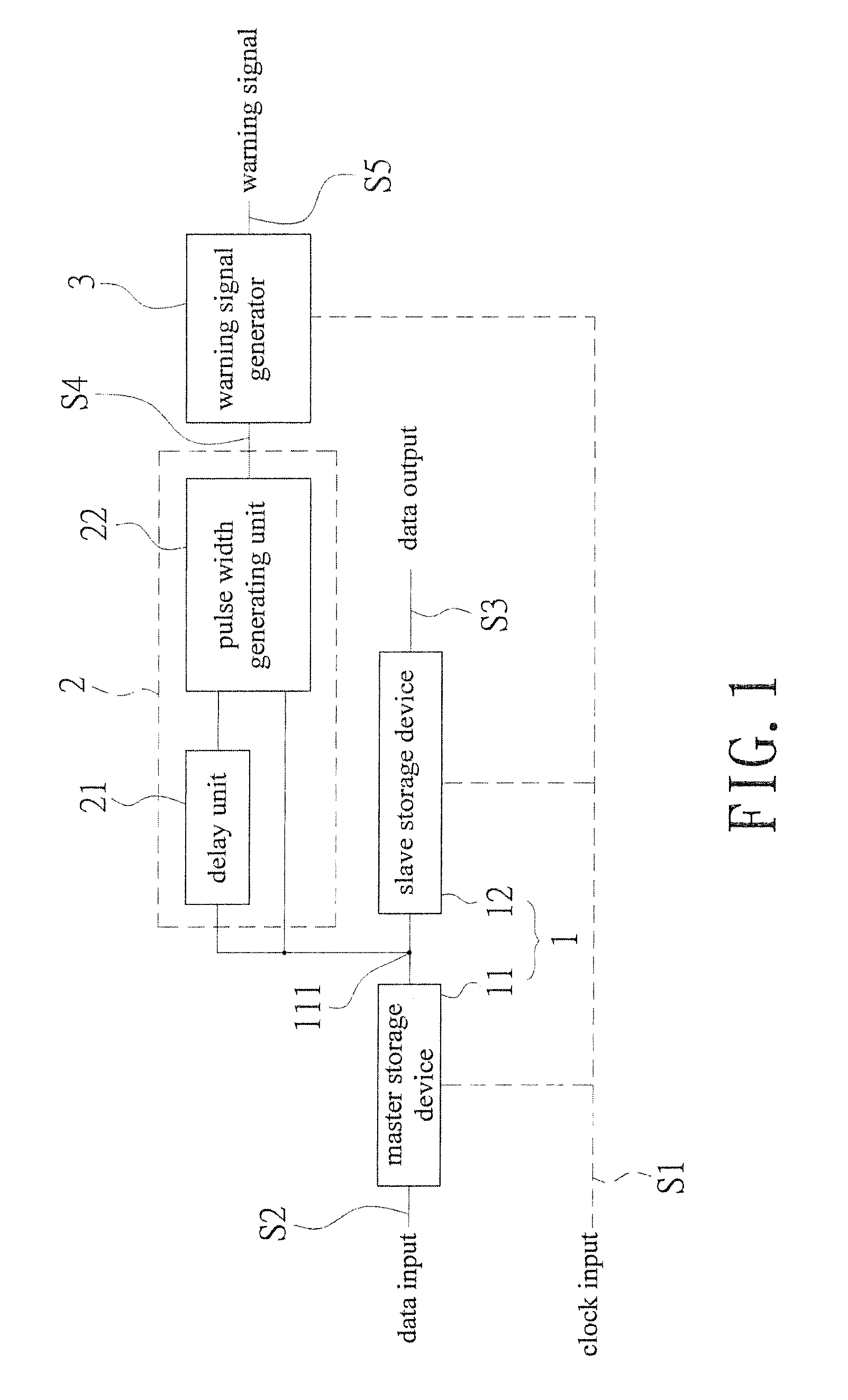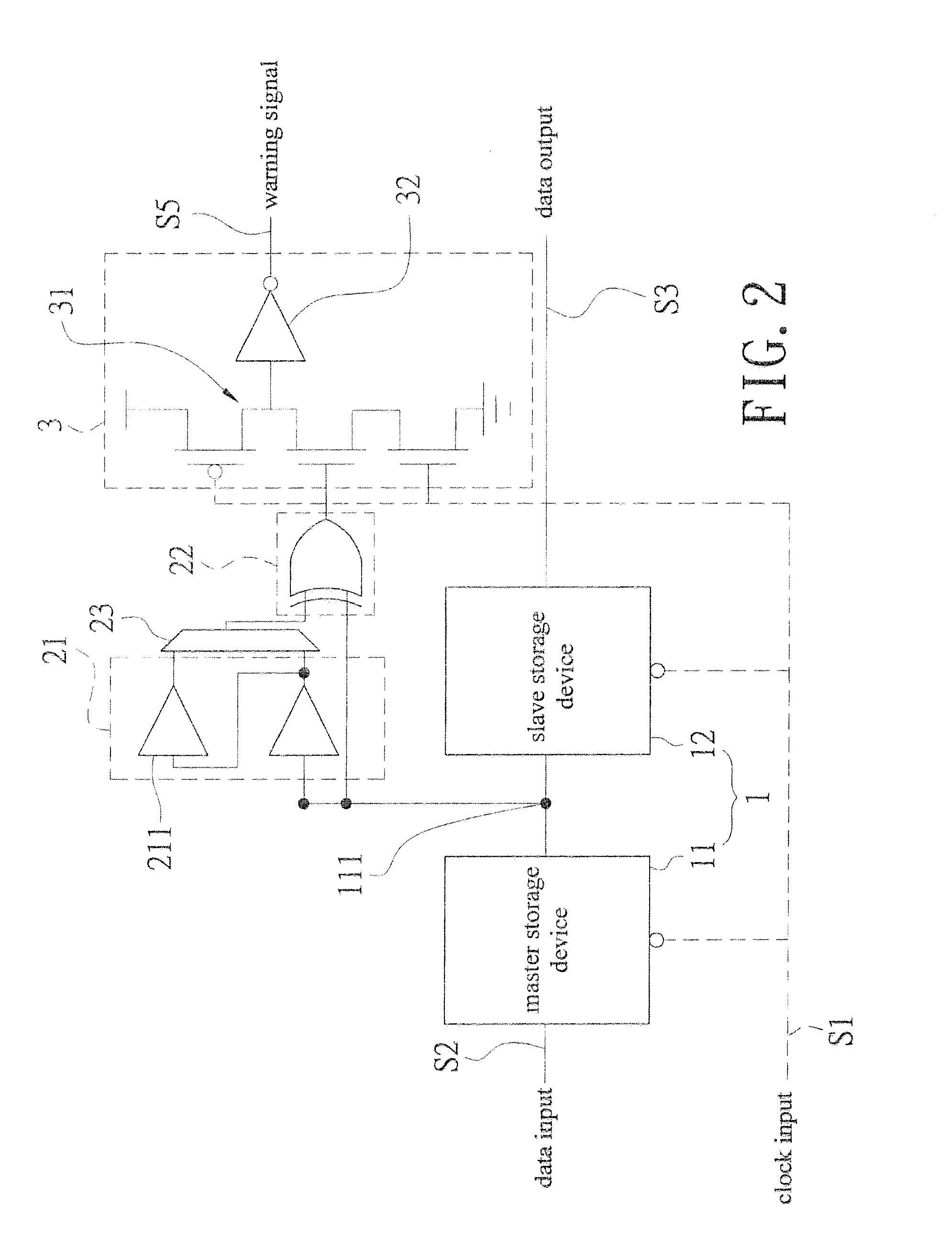In situ pulse-based delay variation monitor predicting timing error caused by process and environmental variation
a technology of delay variation and monitor, applied in logic circuits, voltage/temperature variation compensation, reliability increasing modifications, etc., can solve the problems of increasing process voltage and temperature (pvt) that could cause timing errors during microprocessor operation, increasing the number of process variations, and occupying extra space simultaneously. , to achieve the effect of extending the access time of the latch, reducing overhead, and increasing the pulse width
- Summary
- Abstract
- Description
- Claims
- Application Information
AI Technical Summary
Benefits of technology
Problems solved by technology
Method used
Image
Examples
Embodiment Construction
[0022]Referring to FIG. 1 and FIG. 3, a block diagram showing electrical connections of an embodiment of the present invention and a schematic drawing showing timing error prediction are revealed. An in situ pulse-based delay variation monitor-based delay variation monitor that predicts timing error includes a sequential storage device 1, a transition detector 2, and a warning signal generator 3.
[0023]The sequential storage device 1 consists of a master storage device 11 receiving a clock input S1 and a slave storage device 12. The master storage device 11 has a data input S2 while the slave storage device 12 has a data output S3. A node 111 is set on an electrical connection pathway from the master storage device 11 to the slave storage device 12. The sequential storage device 1 can be a flip-flop.
[0024]The transition detector 2 is electrically connected to the node 111 to receive output of the master storage device 11, form a warning area WM (as shown in FIG. 3) by delay buffer, a...
PUM
 Login to View More
Login to View More Abstract
Description
Claims
Application Information
 Login to View More
Login to View More - R&D
- Intellectual Property
- Life Sciences
- Materials
- Tech Scout
- Unparalleled Data Quality
- Higher Quality Content
- 60% Fewer Hallucinations
Browse by: Latest US Patents, China's latest patents, Technical Efficacy Thesaurus, Application Domain, Technology Topic, Popular Technical Reports.
© 2025 PatSnap. All rights reserved.Legal|Privacy policy|Modern Slavery Act Transparency Statement|Sitemap|About US| Contact US: help@patsnap.com



